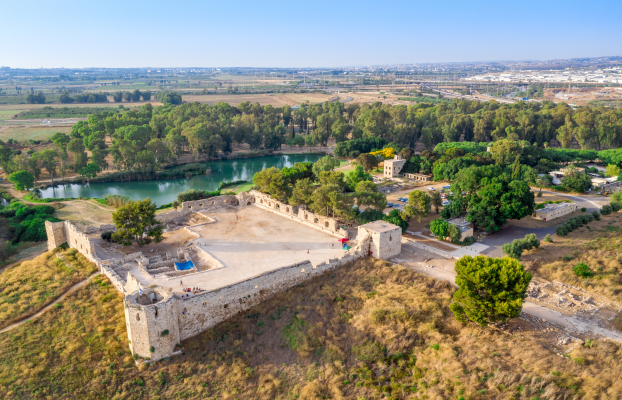The discovery marks the earliest known adaptation of early humans to a new prey following the disappearance of elephants in the Levant.
By Pesach Benson, TPS
Tel Aviv University researchers have identified the earliest known instance of specialized stone tools designed for butchering fallow deer, dating back 400,000 years.
These unique tools, known as “Quina scrapers,” were discovered at the prehistoric sites of Jaljulia and Qesem Cave in central Israel.
This discovery sheds light on significant technological and cultural shifts among ancient human populations following the disappearance of elephants from the region.
The Quina scrapers are notable for their sharp, scale-shaped working edges, which made them highly effective for butchering and processing fallow deer, a medium-sized species of deer.
This technological innovation emerged as a response to the extinction of elephants, which had previously been the primary source of sustenance for early humans in the Levant.
“When elephants disappeared from the region, ancient hunters were forced to make technological adaptations, enabling them to shift their focus to hunting, butchering, and processing the light-footed fallow deer,” explained TAU’s Vlad Litov, one of the lead researchers.
The study, published in the peer-reviewed Archaeologies journal, highlights that these specialized tools were made from non-local flint, sourced from the Mountains of Samaria, approximately 20 kilometers east of Jaljulia and Qesem Cave.
This area is believed to have been the calving ground for fallow deer, suggesting a deep connection between the location of tool production and the habitat of their prey.
Consequently, the researchers hypothesize that Mounts Ebal and Gerizim, situated near present-day Shechem (Nablus), held sacred significance for prehistoric hunters as early as the Paleolithic era.
Starting 1.5 million years ago, early humans primarily used stone scrapers to process the hides and flesh of large game, such as elephants.
However, the study indicates that approximately 400,000 years ago, as large game became scarce, hunters turned their attention to smaller and faster prey, such as fallow deer.
“Butchering a large elephant is one thing, and processing a much smaller and more delicate fallow deer is quite a different challenge.
Systematic processing of numerous fallow deer to compensate for a single elephant was a complex and demanding task which required the development of new implements,” Litov explained.
Excavations at Jaljulia and Qesem Cave, revealed numerous Quina scrapers, all made from flint found in the Mountains of Samaria or the Ben Shemen Forest. These discoveries suggest a systematic approach to tool production, aligned with the new dietary focus on fallow deer.
“We identified links between technological developments and changes in the fauna hunted and consumed by early humans.
For many years researchers believed that the changes in stone tools resulted from biological and cognitive changes in humans.
We demonstrate a double connection, both practical and perceptual,” noted Professor Ran Barkai, the study’s co-author.
The connection between the source of flint and the habitat of fallow deer likely held significant cultural and perceptual value for these prehistoric communities.
Mounts Ebal and Gerizim were considered a source of plenty, further evidenced by the abundant fallow deer bones found at local archaeological sites, including the ancient altar of the Prophet Joshua on Mount Ebal.
“The Mountains of Samaria were likely sacred to the prehistoric people of Qesem Cave and Jaljulia because that’s where the fallow deer came from.
This behavior is familiar from many other places worldwide and is still widely practiced by native hunter-gatherer communities.
Our findings indicate that this region gained cultural prominence as early as the Paleolithic period and retained its unique status for hundreds of thousands of years,” Litov said.
